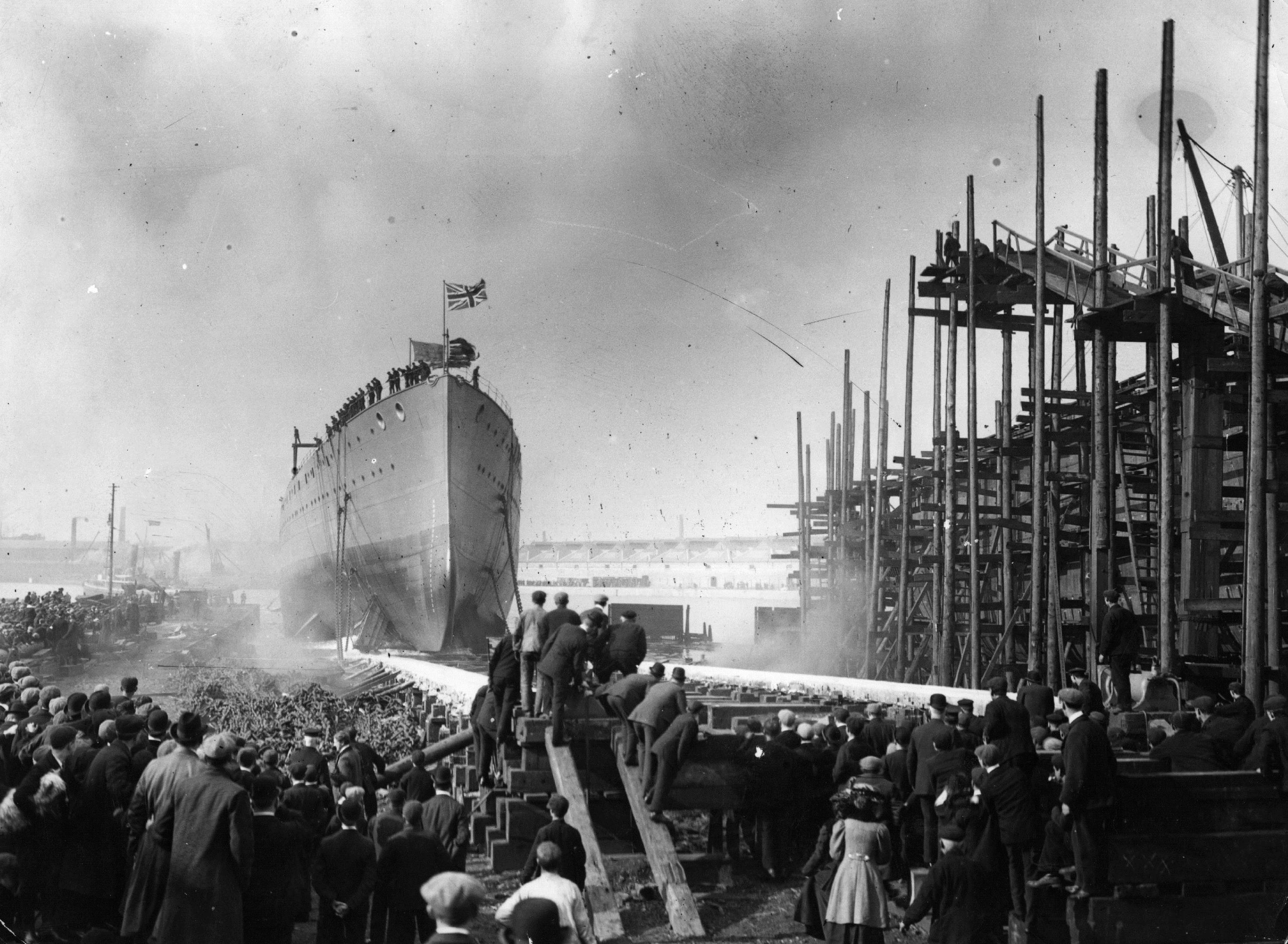
FOR generations of people growing up near the Clyde, the local skyline was once dominated by the huge ships built by armies of hard-working men.
The massive hulls towered over the communities whose residents relied on the industry to put food on the dinner table every night.
The result was that Clydebuilt became a byword around the world for shipbuilding excellence.
Now a new book, Giants Of The Clyde, recounts some of the great vessels that were constructed on the yards along the riverside.
The Waverley, QE2, Cutty Sark, Lusitania, HMS Hood and the Delta Queen are just some of the ships to have been Clydebuilt.
Author Robert Jeffrey said:“My dad was a real enthusiast and he would take me on the 4A bus from Croftfoot to Govan, where I would step off the coach and see these huge hulls on the shipyards dwarfing the surrounding streets. As a wee boy, I would cycle from Glasgow to Gourock to use the outdoor swimming pool and would pass by all these yards.”
As Robert began researching and writing the book, the former journalist soon realised the stories of the workers in the yards were just as interesting as the ships.
“Jimmy Reid said, ‘they didn’t just build ships on the Clyde, they built men’,” Robert said.
“There was a tremendous sense of camaraderie in the good old days. That appeared to be the case at one yard in particular, Denny in Dumbarton, which seemed to be a very happy place and ahead of its time with ideas like work outings.
“I spoke to former shipyard workers and they loved talking about their time in the industry.
“One great story I was told concerned a draughtsman during the Second World War.
“He was sent out to a merchant ship off Greenock to measure her for some modifications and was deep in the bowels all day.
“When he came back on deck at the end of the day, to his horror he realised they were heading out towards the open Atlantic. He asked where they were heading – Murmansk was the reply!
“He was in a sports jacket, collar and tie, and his wife was expecting him home for dinner. He was dropped off at Scapa Flow and had a troublesome journey back to Greenock, with no identification papers, no money and a weak tale to tell the military police!”
Along the road in Port Glasgow, a replica of the Comet, a little vessel that became the first commercially-successful steamboat service in Europe in August 1812, takes pride of place to this day.
His book follows the industry from the early days of the Comet through to the Cutty Sark, warships, liners, Cunard Queens and Ferguson Shipbuilders, spurred on by businessman Jim McColl.
He added: “The story of shipbuilding has had many twists and turns, but there are still a few tales yet to be written.”
Giants of the Clyde is released this Thursday by Black & White Publishing.

Enjoy the convenience of having The Sunday Post delivered as a digital ePaper straight to your smartphone, tablet or computer.
Subscribe for only £5.49 a month and enjoy all the benefits of the printed paper as a digital replica.
Subscribe